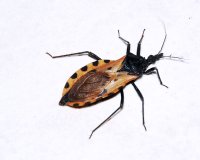Back to the bug

Jumping to a completely different subject, I learned something new this week about something old — the origin of the term “bug,” referring to a problem with computer hardware or software. The story I originally heard directly from the late Grace Hopper, the mother of COBOL, was that a malfunction in the Mark II computer at Harvard in 1947 was traced to a dead moth that in its last living act had shorted out a circuit card. They taped the moth carcass in the computer logbook and history was made. Only it wasn’t, as I realized this week while reading the 1932 Flying and Glider Manual published back then by Modern Mechanics magazine.
“Once you have built your sportplane,” wrote the editor, identified only as Andy, “it must be test flown. If you have already taken flying lessons, you can hop it yourself — if not, entrust the job to a competent pilot. He’ll put it through its paces and find out if there are any ‘bugs’ that need correcting before the plane goes into active service.”
So much for Grace Hopper’s version of the story.
It turns out that “bug” was a common term for hardware glitches and dates back to the 19th century and possibly before. Edison used the term in a letter he wrote in 1878. This is no earthshaking news, of course, but simply reminds me how self-centered we are as an industry and there really isn’t much that’s truly new.
Passando a un argomento completamente differente, questa settimana ho imparato qualcosa di nuovo su qualcosa di vecchio – l’origine del termine “bug” (baco, n.d.t.), che si riferisce a un problema relativo all’hardware o al software di un computer. La storia che ho ascoltato originalmente dalla Grace Hopper, la madre del COBOL, parlava di come un malfunzionamento del computer Mark II ad Harward nel 1947 fosse stato fatto risalire a una falena morta che, come ultimo atto da essere vivente, aveva cortocircuitato una scheda elettronica. La carcassa della falena era stata (quindi, n.d.t.) incollata con in nasto adesivo al diario dei log del computer e da qui viene fatta risalire la storia (n.d.t.). Solo che non è andata così, come ho avuto modo di accorgermi questa settimana, mentre leggevo il “Flying and Glider Manual”, pubblicato nel 1932 dalla rivista Modern Mechanics.
“Dopo avere costruito il vostro aeroplano”, scriveva il redattore, identificato solamente come Andy, “deve essere provato in volo. Se avete già preso qualche lezione di volo, potete saltarci dentro – altrimenti, affidate il lavoro a un pilota competente. Ne saggerà le caratteristiche e scoprirà se vi sono dei “bugs” (bachi, n.d.t.), che richiedono delle correzioni prima che l’aereo venga posto in servizio attivo”.
Questo per quanto riguarda la versione della storia di Grace Hopper.
Sembra che il termine “bug” fosse comunemente usato per guasti hardware e risale al 19 secolo e forse anche precedentemente. Edison utilizzò questo termine in una lettera che scrisse nel 1878 (parlando di bugs nei circuiti elettrici, vedi National Museum of American History). Non si tratta di notizie che sconvolgano il mondo, naturalmente, semplicemente mi ricordano di come la nostra industria sia auto centrica e come non vi sia molto di realmente nuovo.
[Via I,Cringley]
cmq la storia della falena aveva qualcosa di più “romantico”.
Diciamo che si “evince” che la pulizia e l’ordine non sono mai stati troppo di casa nei laboratori e data center…lol…